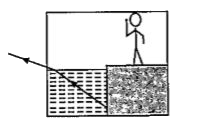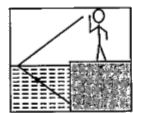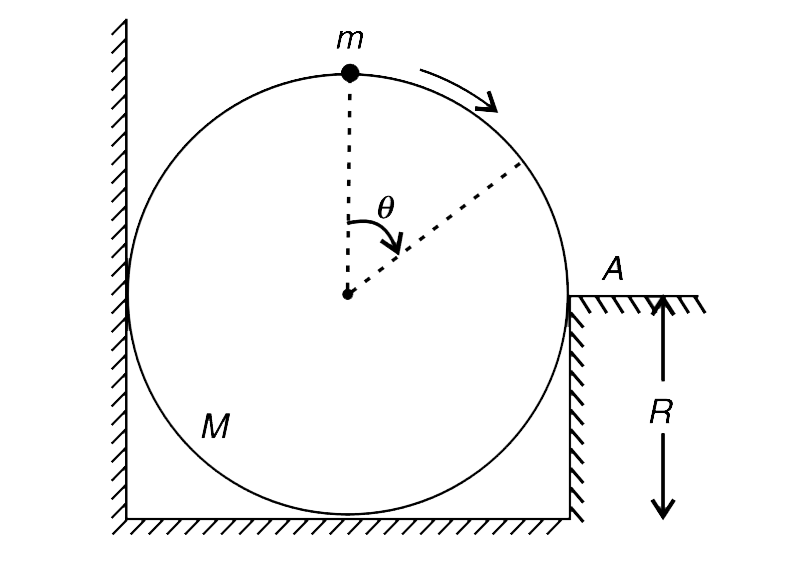
K stands for Kharif while R stands for Rabi. Negative values indicate loss/decline, while positive ones show gain/rise.
Compare table 1 and 2 and state what they tell us about the area under irrigation in both the villages ?
1) From the tables 1 & 2, we can know that the area under irrigation is more in Village - 1 (25%) than in Village - 2 (15%).
2) There is about - 14 percentage change in area under irrigation in Village - 1, where as it about - 30% in case of Village - 2.
3) This is because the underground water is more in Village - 1 when compared with Village - 2.
Topper's Solved these Questions
- NATURAL RESOURCESBOOK - VGS PUBLICATION-BRILLIANTCHAPTER - NATURAL RESOURCESEXERCISE - FILL IN THE BLANKS
5 Videos
- NATURAL RESOURCESBOOK - VGS PUBLICATION-BRILLIANTCHAPTER - NATURAL RESOURCESEXERCISE - CHOOSE THE CORRECT ANSWER
5 Videos
- NATURAL RESOURCESBOOK - VGS PUBLICATION-BRILLIANTCHAPTER - NATURAL RESOURCESEXERCISE - QUESTIONS GIVEN IN THE LESSON (2 MARKS)
23 Videos
- MOSQUITOESS WOESBOOK - VGS PUBLICATION-BRILLIANTCHAPTER - MOSQUITOESS WOESEXERCISE - EXERCISE
3 Videos
- NATURE IS A SACRED PLACEBOOK - VGS PUBLICATION-BRILLIANTCHAPTER - NATURE IS A SACRED PLACEEXERCISE - Fill in the blanks
14 Videos
Similar Questions
Directions: Study the following information carefully and answer the question given below:
K, L, M, P, Q, R, S and T are sitting around a square table in such a way that four of them sit at four corners of the square while four sit in the middle of each of the four sides. The ones who sit at the four comers face outside while those 'who sit in the middle of the sides face the centre of the .table.
P sits thirds to the right of S. S faces the centre. Q sits third to the left of M. M does not sit in the middle of the sides. Only one person sits between Q and R. R is not an immediate neighbour of M. T faces the centre. K is not an immediate neighbour of R.
What is position of M with respect to L?
1) Third to the right
2) M and L sit diagonally opposite to each other
3) Second to the right
4) Second to the left
5) Fifth to the right
View SolutionDinesh is a student of 10th standard. He went to a remote area of Rajasthan for trekking with his friends. Dinesh found that it was a sparsely inhabited area. He was surprised to know that there was still no electricity in this area. The children also had to study with kerosene lamps at night. The village farmers used diesel to run irrigation pumps. Actually, there were no power transmission lines which could bring electricity to this remote area. Dinesh was really disturbed by the living conditions of the people in this part of Rajasthan. One day Dinesh gathered all the people of village in the village school. He told them that if they put pressure on their area MLAs and MP for making available the required funds, then he could tell them about the devices to light up their homes and streets at night, play radio and television and also run irrigation pumps with electricity without there being power transmission lines. All the people agreed and Dinesh described them the devices to get electricity in their area in detail. The village people were very happy to know this and soon they got electricity in their area.
(a) What was the device described by Dinesh to the village people to obtain electricity locally ?
(b) What source of energy is made use of in this device to obtain electricity ?
(c) Why do you think this device is more appropriate for an area like Rajasthan ?
(d) What is the name of the single unit of this device ?
What values are shown by Dinesh in this incident ?
View Solution
Knowledge Check
Negative Refractive Index:
One of the most fundamental phenomena in optics is refraction. When a beam of light crosses the interface between two different materials, its path is altered depending on the difference in the refractive indices of the materials. The greater the difference, the greater the refraction of the beam. For all known naturally occurring materials the refractive index assumes only positive values. But does this have to be the case?
In 1967, Soviet physicist Victor Veselago hypothesized that a material with a negative refractive index could exist without violating any of the laws of physics.
Veselago predicted that this remarkable material would exhibit a wide variety of new optical phenomena. However, until recently no one had found such a material and Veselago's ideas had remained untested. Recently, meta-material samples are being tested for negative refractive index. But the experiments show significant losses and this could be an intrinsic property of negative index materials.
Snell's law is satisfied for the material having a negative refractive index, but the direction of the refracted light ray is 'mirror-imaged about the normal to the surface.

There will be an interesting difference in image formation if a vessel is filled with "negative water" having refractive index - 1.33 instead of regular water having refractive index 1.33.
Say, there is a fish in a vessel filled with negative water. The position of the fish is such that the observer cannot see it due to normal refraction since the refracted ray does not reach to his eye.

But due to negative refraction, he will be able to see it since the refracted ray now reaches his eye.
A ray in incident on normal glass and. "Inegative glass" at an angle 60∘. If the magnitude of angle of refraction in normal glass is 45∘ then, what will be the magnitude of angle of refraction in the "negative glass"?ALess than 45∘BMore than 45∘C45∘DUnpredictableFigure shows a long cylindrical container with ideal gas in two chambers. Lower chamber is filled with one mole of a mono atomic gas, while upper chamber has one mole of a diatomic gas. The gases initially are at temperature 300K, the container walls as well as pistons are conducting. Both the pistons are identical with mass 'M' and area 'A' such that MgA=P0 (atmosphere pressure).
Assuming the ideal gas constant to be R, answer the following questions:

The upper piston is pulled up slowly by 16cm and held there. the displacement of the lower piston till it reaches new equilibrium state is:A2cmB4cmC8cmD12cmRead the passage given below and answer the questions that follow : -
The Face of Village India
Thirteen years ago, the then American President Bill Clinton drove down to Rampur's Mani Haran village in western UP. He had come there to open a women's polytechnic, funded by a prominent NRI. Today, the Bill Clinton school stands bright and shiny on the same campus, among low slung buildings that houses libraries and class rooms. According to the School President Raj Kamal Saxena, there are 565 students studying under CBSE of whom 234 are girls. Besides the local folks, the affluent families across the social spectrum send their children to this institution.
The success story of the school in the area has given rise to a spate of educational institutions along the road from Shamli to Saharanpur. All of them promise to unlock exciting career options especially for the landed class of the area. These schools carry trendy names and have sprung up in the years after the 42nd President of the US came calling. Sitting amidst sugarcane fields and mango orchards, they present a picture of society trying to change. Despite such a positive social factor visible in the area, there is little evidence of all round changes in the area. The roads are battered and dusty. The dream of an all weather road remains a dream. Steady power supply is unthinkable and traditional industries are now on a decline. Added to these are the problems of governance such as law and order situation.
According to locals, people in the region are looking for a change. The driving force behind this urge for change is the youth. Most of the young men who have returned to the area have been educated in Delhi and have returned to work in their home town and for them the development of the region overrides all other concerns. Among the semi agrarian middle classes, the call for a change is not through the region's facilities, but through the ballot box. They are eager for a change in the very government of the state.
What are the infrastructure drawbacks in the area ?ABattered and dusty roadsBUnsteady power supplyCDecline in traditional industriesDAll the above
A uniform frictionless ring of mass M and radius R, stands vertically on the ground. A wall touches the ring on the left and another wall of height R touches the ring on right (see figure).There is a small bead of mass m positioned at the top of the ring. The bead is given a gentle push and it being to slide down the ring as shown. All surfaces are frictionless.

(a) As the bead slides, up to what value of angle θ the force applied by the ground on the ring is larger than Mg?
(b) Write the torque of force applied by the bead on the ring about point A as function of θ.
(c) What is the maximum possible value of torque calculated in (b)? Using this result tell what is the largest value of mM for which the ring never rises off the ground ?
View SolutionNotice the highlighted words in the following sentences.
1. "When I leave,' Sophie said, coming home from school, "I'm going to have a boutique."
2. Jansie, linking arms with her along the street, looked doubtful.
3. "I'll find it," Sophie said, staring far down the street.
4. Jansie, knowing they were both earmarked for the biscuit factory, became melancholy.
5. And she turned in through the open street door leaving Jansie standing in the rain.
- When we add "ing" to a verb we get the present participle form. The present participle form is generally used along with forms of "be', (is, was, are, were, am) to indicate the continuous tense as in "Sophie was cominghome from school."
- We can use the present participle by itself without the helping verb, when we wish to indicate that an action is happening at the same time as another.
- In example 1, Sophie "said" something. "Said", here, is the main action.
- What Sophie was doing while she was "saying" is indicated by "coming home from school". So we get the information of two actions happening at the same time. We convey the information in one sentence instead of two.
I. Analyse the other examples in the same way.
II. Pick out five other sentences from the story in which present participles are used in this sense.
View SolutionEach of the questions below consists of a question and two statements numbered I and n given below it. You have to decide whether the data provided in the statements are sufficient to answer the question. Read hoth the statements and give answer
1) if the data in statement I alone are sufficient to answer the question .while the data in statement II alone are not sufficient to answer the question.
2) if the data in statement II alone are sufficient to answer the question while the data in statement I alone are not sufficient to answer the question.
3) if the data either in. statement I alone or in statement II alone are sufficient to answer the question.
4) if the data even in both statements I and II together are not sufficient to answer the question.
5) if the data in both statements I and II together are necessary to answer the question.
What does 'Ne' stands for in the code language?
I. ‘Na Ni Nok Ne’ means ‘I will tell you' and ‘Ni Nok Ne Nam! means ‘he will tell you’ in that code language
II. Ni Ne Mo Nam' means ‘will he call you’ and 'Ne Mok Sac Ni' means ‘how will you go’ in that code language.
View SolutionRead the passage given below and answer the questions that follow : -
The Face of Village India
Thirteen years ago, the then American President Bill Clinton drove down to Rampur's Mani Haran village in western UP. He had come there to open a women's polytechnic, funded by a prominent NRI. Today, the Bill Clinton school stands bright and shiny on the same campus, among low slung buildings that houses libraries and class rooms. According to the School President Raj Kamal Saxena, there are 565 students studying under CBSE of whom 234 are girls. Besides the local folks, the affluent families across the social spectrum send their children to this institution.
The success story of the school in the area has given rise to a spate of educational institutions along the road from Shamli to Saharanpur. All of them promise to unlock exciting career options especially for the landed class of the area. These schools carry trendy names and have sprung up in the years after the 42nd President of the US came calling. Sitting amidst sugarcane fields and mango orchards, they present a picture of society trying to change. Despite such a positive social factor visible in the area, there is little evidence of all round changes in the area. The roads are battered and dusty. The dream of an all weather road remains a dream. Steady power supply is unthinkable and traditional industries are now on a decline. Added to these are the problems of governance such as law and order situation.
According to locals, people in the region are looking for a change. The driving force behind this urge for change is the youth. Most of the young men who have returned to the area have been educated in Delhi and have returned to work in their home town and for them the development of the region overrides all other concerns. Among the semi agrarian middle classes, the call for a change is not through the region's facilities, but through the ballot box. They are eager for a change in the very government of the state.
They are eager for a change in the very government of the state. Who are 'they' ?
View SolutionThe Global Nutrition Report (GNR) and India Health Report on Nutrition, 2015 (IHR), offer a critical analysis of the state of nutrition in India. The fo:st report, the India Health Report: Nutrition 2015(IHR), provides easy-to-understand, State-wise data dashboards that give a comprehensive view ofnutrition and its determinants. It looks at disparities in these outcomes and their multiple determinants across geographical regions, socio- economic classes, and demographic groups to help identify strategic choices for policy-making at the State level.
In turn, GNR assesses progress in reducing malnutrition for all 193 countries. lt concludes that while India is on track to meeting only two of the eight global targets on nutrition, it has significantly improved its nutrition performanc~ in the past 10 years. GNR notes that there has been a big increase in the number of countries on track to meet global nutrition targets, and encourages countries, including India, to establish specific and time-bound targets for malnutrition reduction that are consistent with the Sustainable Development Goals. Together, these reports paint several pictures about India, a data-poor country. They portray one of great progress in improving nutrition across India, stunting among children, a marker of the most persistent types of malnutrition, has declined rapidly in the last ten years. And this decline has been faster than in many other countries. But as we dig deeper, there are diverse pictures about the life conditions ofindian children - positive stories about children's lives and futures in Goa, Kerala, Manipur and Tamil Nadu, but dismal ones in Bihar, Jharkhand and Uttar Pradesh. What cannot be debated is the reality of deep, systemic inequality, of inequality in the circumstances that children are born into, that they live and grow in. For those of us who are worried about India's economic growth, these are also pictures of inequality that point to how well these children will be able to contribute to India's economic growth and their own prosperity. Their poor nutrition stunts more than their bodies. It stunts their well-being, and, consequentially, that of their home States and their nation. Two other things, both related to inequality, stand out as well in the data. First, the data point to tremendous variability across States in delivering what should be universal, rights-based and already mandated health and nutrition services. For example, sample this for intra-State disparity. Food provided by the Integrated Child Development Services reaches barely 1 in 5 children in Uttar Pradesh but over 90 per cent in Odisha. Less than 33 per cent of children in Nagaland are fully immunised, in Goa, it is more than 90 per cent. Close to 80 per cent defecate in the open in Odisha, barely 2 per cent do so in Kerala. Why?
These are disparities across States that operate in the same national framework, and there is, let's face it, no good reason for this other than an inability or an unwillingness to invest in changing ground realities, for everyone and everywhere. This is not an insurmountable challenge and it's certainly an area where States can, if they want it, make dramatic change in short timeframes. Examples abound from within India. The data in the reports show that, clearly, the imperative for introspection, and looking within for solutions was never clearer. No child should go without basic health care, food security and things like water and a toilet. Indeed, no adult should either. No society should condone such inequalities in th~ basics. And no society has progressed without addressing these basics.
The Global Nutrition Report focuses mainly on the
View Solution
